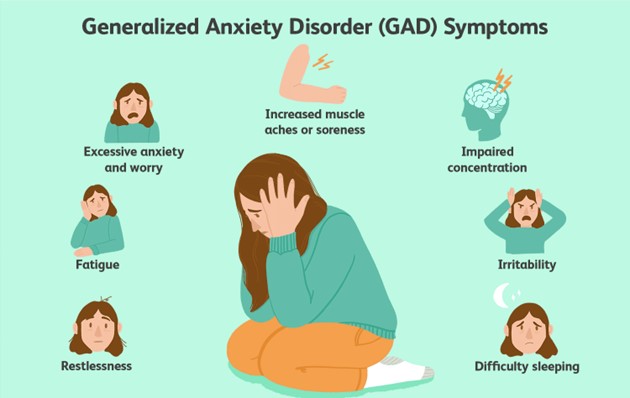A nurse in an urgent care clinic is caring for a client who is using loud and rapid speech and continuously repeats, "I don't know why my wife left me." Which of the following levels of anxiety is the client experiencing?
Moderate
Panic
Severe
Mild
The Correct Answer is A
Moderate. According to the Mayo Clinic moderate anxiety is characterized by symptoms such as loud and rapid speech, difficulty concentrating, restlessness, and increased worry. The client's behavior matches these symptoms, indicating that they are experiencing moderate anxiety.

Choice B. Panic is incorrect because panic is a severe form of anxiety that involves symptoms such as chest pain, shortness of breath, trembling, and a sense of impending doom. The client does not exhibit these symptoms.
Choice C. Severe is incorrect because severe anxiety is marked by symptoms such as irrational fear, detachment from reality, hallucinations, and loss of control¹². The client does not show these symptoms.
Choice D. Mild is incorrect because mild anxiety is associated with symptoms such as nervousness, increased alertness, and slight discomfort¹². The client's symptoms are more intense than mild anxiety.
Nursing Test Bank
Naxlex Comprehensive Predictor Exams
Related Questions
Correct Answer is ["A","B","C","E"]
Explanation
The elderly tend to heal more slowly which can delay wound healing and increase the risk of infection. The elderly person has a greater proportion of body surface area per amount of body mass which increases the amount of skin available for injury, and thus the severity of the burn. The elderly person has less physiological reserves which makes it more difficult for the body to respond to injury and stress. Elderly patients have comorbidities such as diabetes, cardiovascular disease, and respiratory disease that can impair the body's ability to heal and increase the risk of complications. Elderly patients do not typically have thicker skin as it thins with age.
Correct Answer is B
Explanation
Whether the client is a danger to herself or others. When a client is involuntarily admitted to a mental health unit, they are held for an initial period of 72 hours for evaluation and treatment. Afterward, a determination must be made as to whether or not the client is still a danger to themselves or others to keep them in the hospital.
Choices A, C, and D do not address the primary concern of ongoing safety for the client and others.

For choice A, the client's financial status or their ability to pay for prescribed medications is not relevant to their safety or need for hospitalization.
For choice C, the client's ability to make arrangements to stay with someone is important for discharge planning but not for determining their need for ongoing hospitalization.
Finally, for choice D, whether the client is unwilling to accept treatment is important, but not the sole determining factor as to whether they are a danger to themselves or others.
Whether you are a student looking to ace your exams or a practicing nurse seeking to enhance your expertise , our nursing education contents will empower you with the confidence and competence to make a difference in the lives of patients and become a respected leader in the healthcare field.
Visit Naxlex, invest in your future and unlock endless possibilities with our unparalleled nursing education contents today
Report Wrong Answer on the Current Question
Do you disagree with the answer? If yes, what is your expected answer? Explain.
Kindly be descriptive with the issue you are facing.
